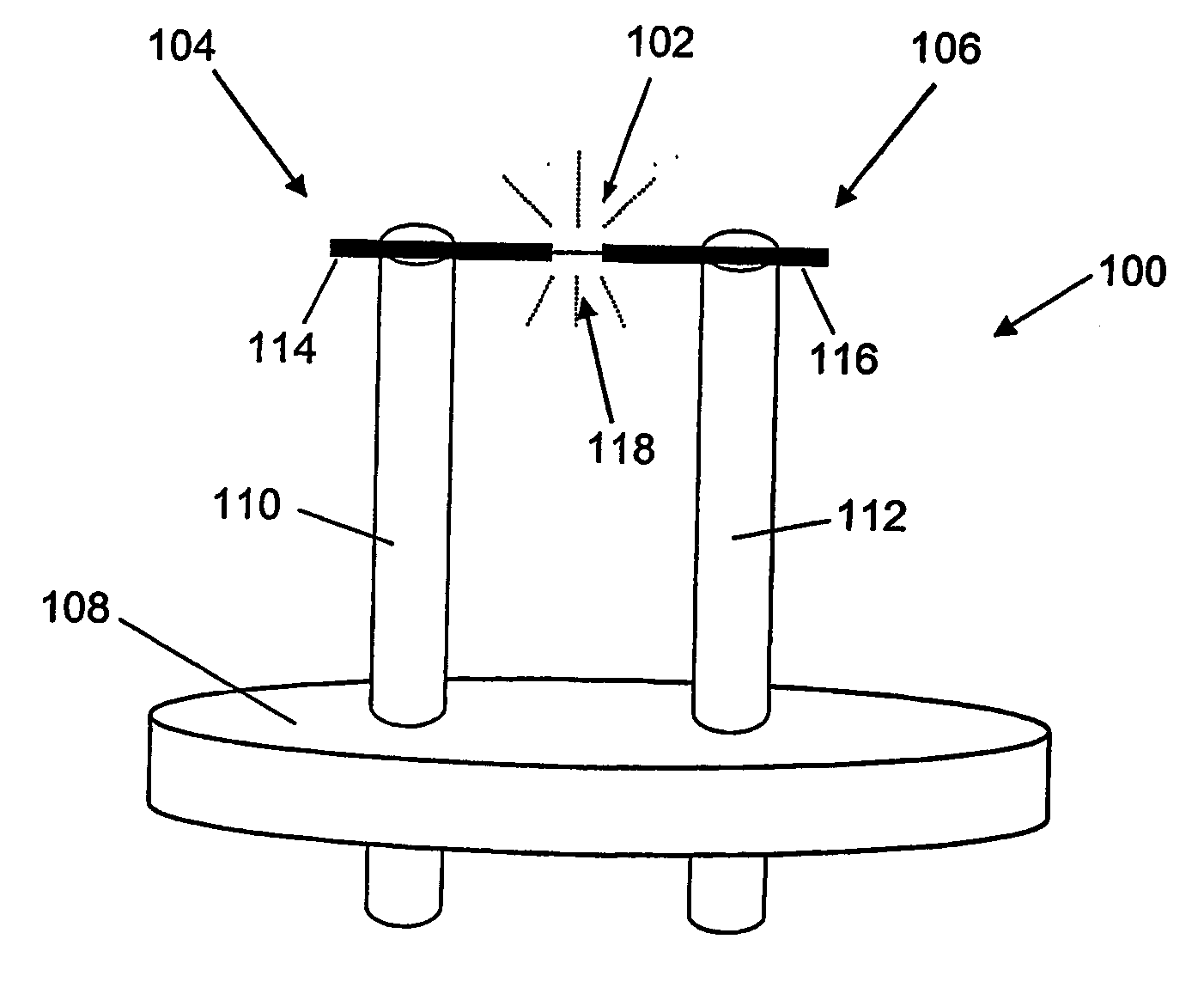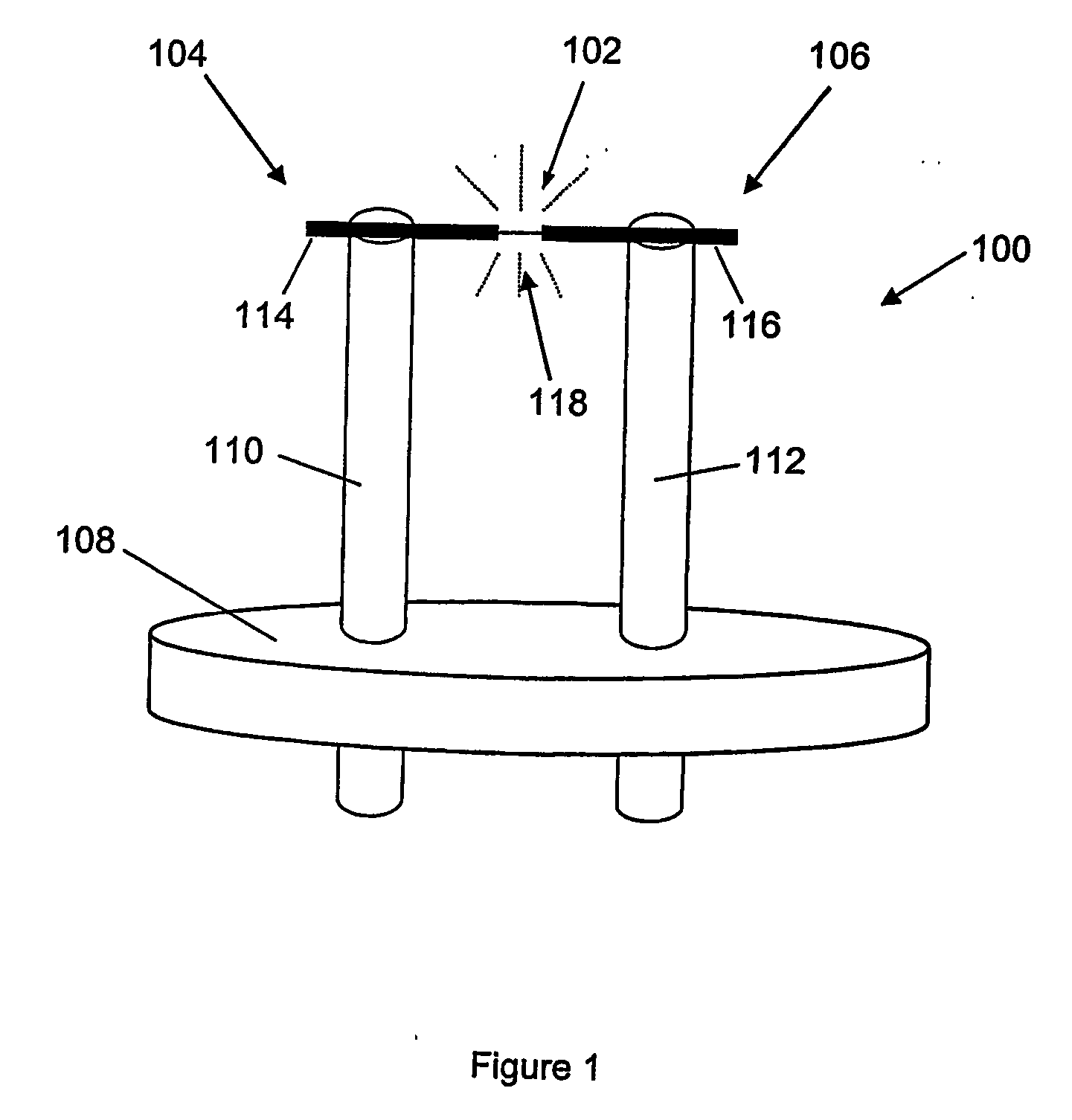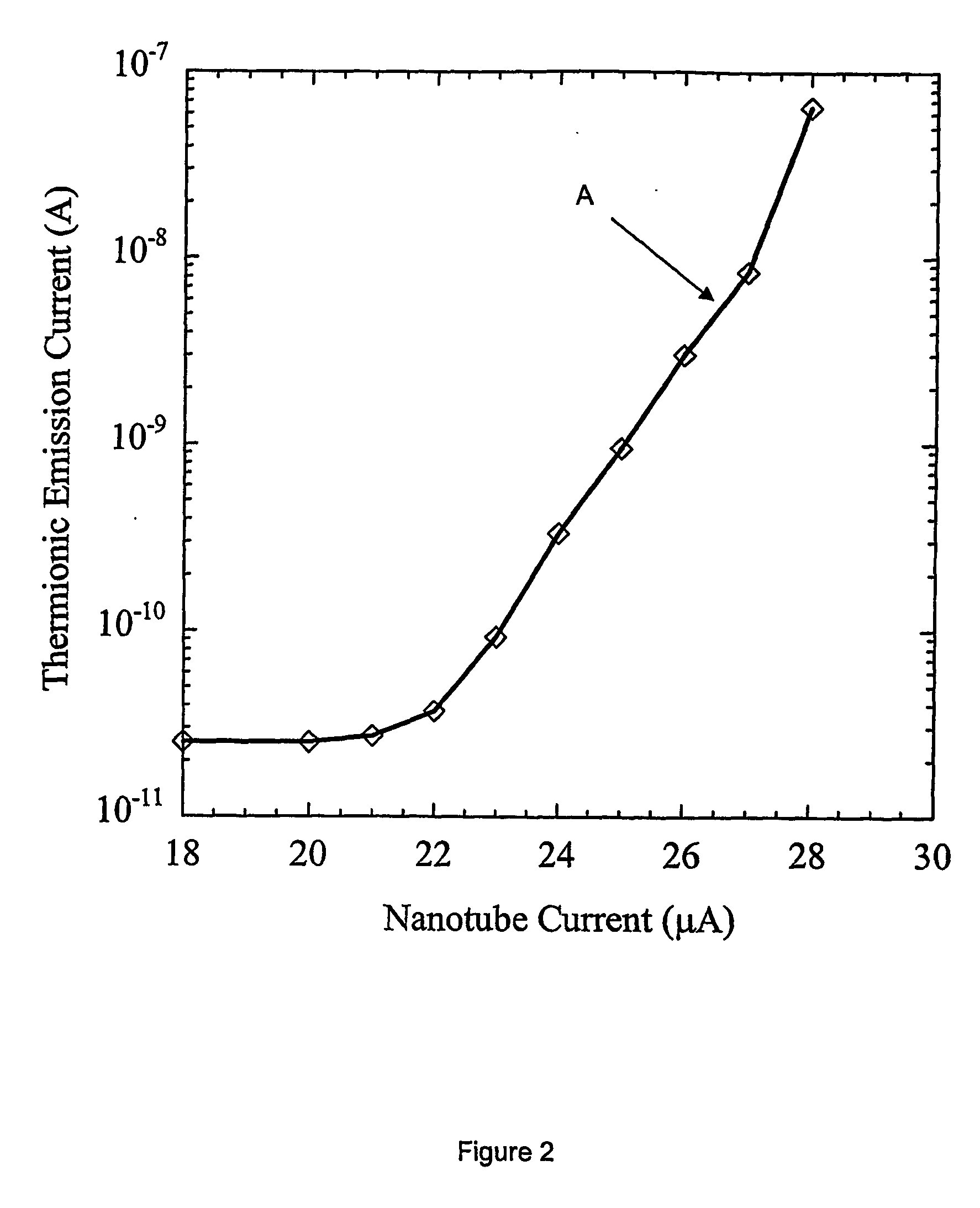Cathode for an electrode source
a cathode and electron source technology, applied in the manufacture of electrode systems, discharge tube main electrodes, electric discharge tubes/lamps, etc., can solve the problems of large number of manufacturing problems that still need to be fully resolved, high cost of cathodes, etc., to achieve high melting temperature and thermal stability, particularly useful characteristics, and good electrical conductivity
- Summary
- Abstract
- Description
- Claims
- Application Information
AI Technical Summary
Benefits of technology
Problems solved by technology
Method used
Image
Examples
Embodiment Construction
Thermionic Cathode
[0044] Referring to FIG. 1, a thermionic cathode 100 comprises an individual carbon nanotube 102 attached between two electrodes 104, 106. The electrodes 104, 106 are mounted on a substrate or, in this embodiment, attached to an insulating base 108. The electrodes 104, 106 each comprise a post 110, 112 and a carbon fibre 114, 116. The posts 110, 112 are each generally upright with respect to the base 108 and spaced part from one another by around 3 mm. The carbon fibres 114, 116 are attached to the ends of the posts 110, 112 distal from the base 108 and extend toward one another, substantially along a single axis. In this embodiment, the carbon fibres 114, 116 are each substantially orthogonal to the post 110, 112 to which they are attached and extend a roughly equal distance toward one another. So, the electrodes 104, 106 can be thought of as almost forming a goalpost shape, although the cross bar is divided into two parts (each of the carbon fibres 114, 116). T...
PUM
 Login to View More
Login to View More Abstract
Description
Claims
Application Information
 Login to View More
Login to View More - R&D
- Intellectual Property
- Life Sciences
- Materials
- Tech Scout
- Unparalleled Data Quality
- Higher Quality Content
- 60% Fewer Hallucinations
Browse by: Latest US Patents, China's latest patents, Technical Efficacy Thesaurus, Application Domain, Technology Topic, Popular Technical Reports.
© 2025 PatSnap. All rights reserved.Legal|Privacy policy|Modern Slavery Act Transparency Statement|Sitemap|About US| Contact US: help@patsnap.com



